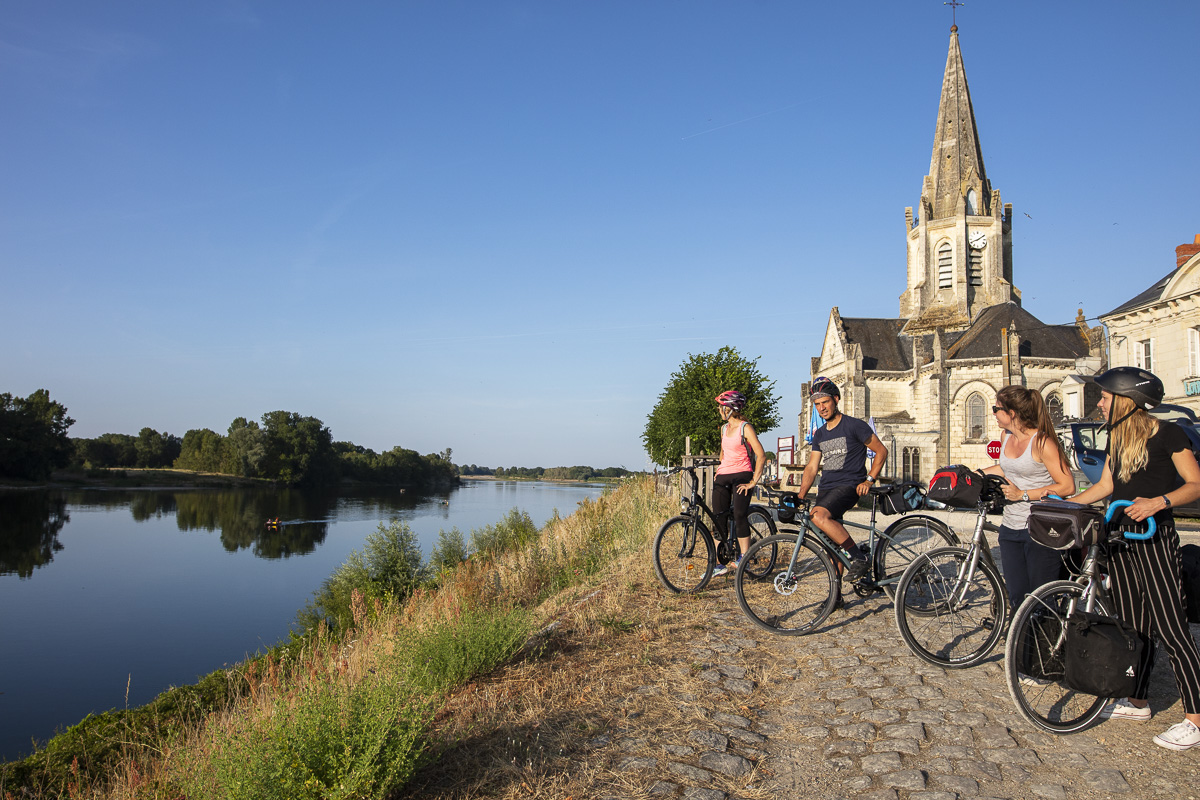From port to port

Bréhémont
From port to port
Easy
1h30
15,7km
+0m
0m
Loop
Embed this item to access it offline
Description
1. Bréhémont
Directly adjacent to the Loire embankment, Bréhémont river port is evidence of the importance
of trade on the river, particularly the cultivation and sale of hemp. Bréhémont is the meeting point of the Loire
à Vélo and Indre à Vélo routes. The hydrogen-powered bicycle can be hired here. Also note the metal work of art,
which illustrates all the special features of Bréhémont.
2. Lignières-de-Touraine
In the center of the village, do not miss the church dedicated to Saint-Martin and built in the 12th century. The choir reveals mural paintings of romanic period. Aroud the church, you can discover the interpretation trail made from postcards and photographs dating from the 1920s to the 1970s.
3. The castle of Fontenay
Built on the remains of a Gallo-Roman villa, this 15th century seigniorial residence has retained its boundary wall intact. The interior garden, intimate and beautiful, is evocative of courtly romance of the Middle Ages.
4. La Chappelle-aux-Naux
Some islands can be seen from the harbor, now bird reserves. The hemp ovens are a visible testament to the large scale cultivation of hemp prior 1966. As a former fishermen’s village, also known as «bateliers», the port is home to a « toue », traditional boat restored by an association.
5. The bridge of Langeais
The bridge of Langeais, with its towers and turrets, was built in 1849. After being rebuilt twice, it was repaired the last time in 1946
Directly adjacent to the Loire embankment, Bréhémont river port is evidence of the importance
of trade on the river, particularly the cultivation and sale of hemp. Bréhémont is the meeting point of the Loire
à Vélo and Indre à Vélo routes. The hydrogen-powered bicycle can be hired here. Also note the metal work of art,
which illustrates all the special features of Bréhémont.
2. Lignières-de-Touraine
In the center of the village, do not miss the church dedicated to Saint-Martin and built in the 12th century. The choir reveals mural paintings of romanic period. Aroud the church, you can discover the interpretation trail made from postcards and photographs dating from the 1920s to the 1970s.
3. The castle of Fontenay
Built on the remains of a Gallo-Roman villa, this 15th century seigniorial residence has retained its boundary wall intact. The interior garden, intimate and beautiful, is evocative of courtly romance of the Middle Ages.
4. La Chappelle-aux-Naux
Some islands can be seen from the harbor, now bird reserves. The hemp ovens are a visible testament to the large scale cultivation of hemp prior 1966. As a former fishermen’s village, also known as «bateliers», the port is home to a « toue », traditional boat restored by an association.
5. The bridge of Langeais
The bridge of Langeais, with its towers and turrets, was built in 1849. After being rebuilt twice, it was repaired the last time in 1946
- Departure : Bréhémont
- Arrival : Bréhémont
- Towns crossed : Bréhémont, La Chapelle-aux-Naux, and Lignières-de-Touraine
Forecast
Sensitive areas
Along your trek, you will go through sensitive areas related to the presence of a specific species or environment. In these areas, an appropriate behaviour allows to contribute to their preservation. For detailed information, specific forms are accessible for each area.
The site was designated in 2005 under the Birds Directive. The Park has been coordinating the site since 2010 (initially for the period 2010-2016, then renewed for 2016-2019 and 2019-2022), in conjunction with the CPIE Touraine-Val de Loire and the Indre-et-Loire Chamber of Agriculture.
The low valleys are largely covered by natural flood meadows, which are mown and/or grazed. These meadows form large complexes that are home to rare and endangered birds: corncrake, red-backed shrike, meadowlark, spotted crake, etc.
Certain sectors are characterized by a dense bocage network, with pollarded trees surrounding the meadows (Véron bocage): this is the home of the Common Fritillary, Natterjack Toad, Great Capricorn...
Finally, the banks of the Vienne and Indre rivers are occupied by alluvial woodlands and poplar plantations.
The low valleys are largely covered by natural flood meadows, which are mown and/or grazed. These meadows form large complexes that are home to rare and endangered birds: corncrake, red-backed shrike, meadowlark, spotted crake, etc.
Certain sectors are characterized by a dense bocage network, with pollarded trees surrounding the meadows (Véron bocage): this is the home of the Common Fritillary, Natterjack Toad, Great Capricorn...
Finally, the banks of the Vienne and Indre rivers are occupied by alluvial woodlands and poplar plantations.
- Impacted practices:
- Aquatic, Land
- Sensitivity periods:
- JanFebMarAprMayJunJulAugSepOctNovDec
- Contact:
Information desks
4 Rue du Château, 37190 Azay-le-Rideau
Report a problem or an error
If you have found an error on this page or if you have noticed any problems during your hike, please report them to us here: